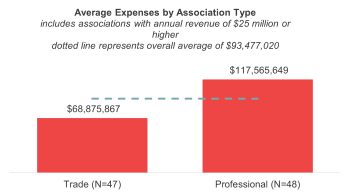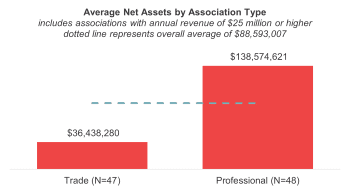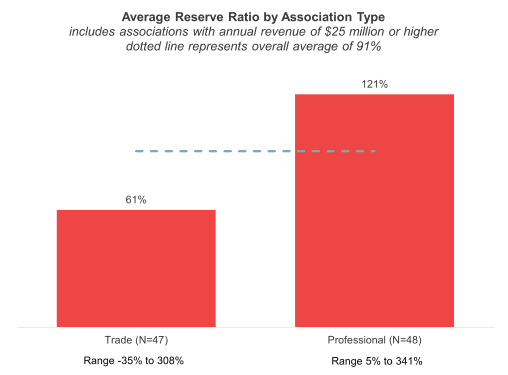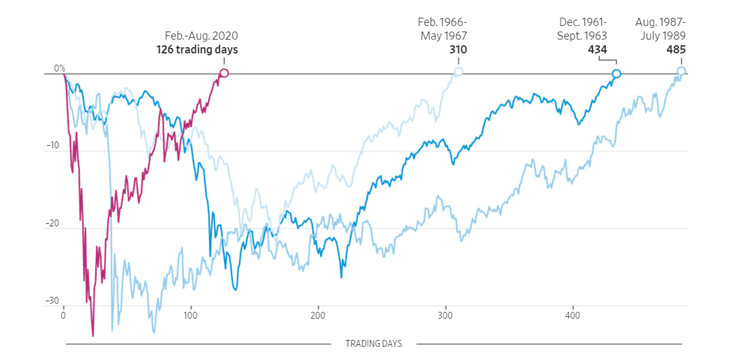Now is the time for associations to invest in bold, ambitious and collaborative initiatives to solve some of society’s most profound challenges.
Transformation is traditionally the exception, not the rule.
In the lifecycle of an organization, an initial upswing of growth and innovation is often followed by an extended plateau or even decline. The aspiration and vitality that define a young organization give way to deeply embedded practices that run — rather than transform — the business. For associations, where culture is steeped in tradition and risk is often voted down rather than embraced, the act of reimagining what is possible can be challenging and uncommon.
Yet associations hold the power to transform.
The continuing effects of the pandemic and other events around the nation have compelled many association staff and leaders to adopt more rapid and nimble decision-making, respond boldly to the escalating membership challenges, and tap into what many call an association’s greatest asset — its financial reserves — to deliver on its mission in unprecedented ways. At the end of 2021 or even in a few years, will your organization be able to say the same?
The financial health of the sector
To provide guidance on how associations might transform, we first set out to understand the financial health of the sector as it entered the pandemic and economic crisis. Our assumptions were based on the belief that many associations, particularly those within specific demographic cohorts, had benefited from the 10-year economic runup to 2020.
We analyzed the most recent publicly accessible 990 data — from the years 2015 to 2018 — of 48 professional associations and 47 trade associations with total revenue of $25M or higher. We calculated the reserve ratio by dividing net assets by annual operating expenses and used the commonly accepted “rule of thumb” of 50% of current operating expenses as a baseline for a healthy reserves portfolio.
What we found is that these associations held an average net asset of more than $88 million. Additionally, the reserve ratio across both the trade and professional sectors exceeded the baseline of 50%. In fact, the average for professional associations peaked at 121%, the trade association average at 61%, and the average across both sectors at 91%. Yet like most averages, these numbers do not reflect the nuance of all associations within the study. While some trade and professional associations have ratios higher than 300%, some fall into the negative range or single-digit percentages.



How have these numbers changed since the 2015 to 2018 timeframe? While the largest associations likely maintained, even strengthened, their financial positions from 2018 to early 2020, the sudden stock market plunge in March 2020 would have translated into significant declines in reserves for many associations. Just as quickly, however, the market rebounded from mid-March to August 2020. This leads us to believe that association reserves have recovered most of their losses, except for organizations that may have “sold at the bottom.”
S&P 500 fastest recoveries following a bear market,
from record high to new record

Source: Dow Jones Market Data
Changing the “Rainy Day Fund” mindset
Reserves provide associations with a distinct advantage during times of financial uncertainty or decline. They function as a sort of “rainy day fund” that mitigates risk to the organization. And while it is human nature to focus on protecting assets and minimizing change during times of disruption, we have observed that leading organizations do the opposite. They capitalize on market pressures and emerging opportunities to reimagine their businesses. They recognize that self-initiated organizational change is rare and likely to smolder, while change triggered by external circumstances can stretch boundaries and ignite action in ways that are impossible in more stable environments.
One could argue that associations, with their tax-exempt status and ability to build effectively limitless reserves, have the obligation to redeploy resources to support their members, professions and industries during times of duress. After all, these reserves are funded primarily from members themselves through dues and fees.
Examples of transformation
Where does an association start, given the complexity associated with transformational work during a crisis? Leaders need to identify specific pain points or opportunities to guide the work. In the age of a global pandemic, economic instability, and a growing sentiment that we have an overdue opportunity to meaningfully reduce inequality in our society, we can find plenty of examples. We share three of them below.
Preparing, protecting and diversifying the workforce:
As a sector that represents every major industry and profession in the nation and provides continuing education and training, associations have incredible influence over the composition and preparation of the workforce. The COVID-19 crisis will accelerate automation and change work roles, requiring employees to retrain or seek support for placement in entirely new careers. With the power to convene, serve, and ultimately lead diversity and equity efforts within their communities, imagine the impact on society from a sustained, deliberate and collaborative association effort to engage and catalyze the workforce through a lens of equality.
For example, the National Restaurant Association, in partnership with the Littler Workplace Policy Institute and Prime Policy Group, began an initiative in 2019 called the Technology-Induced Displacement of Employees (TIDE). Through this program, the association aims to help both employers and employees prepare for and adapt to the effects of increased automation. With more minority managers than any other industry and over half of all chefs representing minority populations, this effort within the restaurant industry represents true change at the grassroots level.
Resources like CEO Action also play a powerful role in holding organizations accountable and bringing proven tools and insights together for the benefit of the community. This effort translates into examples like Ariel Investments, a Chicago-based investment firm that has taken the CEO Action pledge and is supporting its communities by investing in local, minority-owned businesses.
Collaborations to address grand challenges:
While challenges like climate change might represent a scale that few associations could tackle independently, a coalition working on these problems could hold staggering potential. Associations working collectively, whether within an industry or across industries, can pool resources, influence, and develop solutions that reflect the reality of our current, highly interdependent society.
For example, the Climate Health Action coalition with close to 200 medical associations, medical facilities, and nonprofit groups was formed to recognize climate change as a health emergency. Together they work across government agencies and with communities and businesses to prioritize action.
Research and development:
How can associations leverage the expertise of their membership to become incubators and accelerators of innovation?
With the successful launch of the Falcon 9 rocket and Crew Dragon capsule carrying two NASA astronauts in late May, SpaceX became the first private company in the world to take humans into orbit. In fact, SpaceX not only built a space shuttle, they built what engineers called a “human-rated” space shuttle. This historic event, which likely sparked a new generation of career ambitions among children who watched the launch, reminds us again of the power of engineers, technicians, programmers, and a host of other professionals to advance society.
The Institute of Electrical and Electronics Engineers (IEEE) and its humanitarian program, SIGHT, provide grants and an operational framework to support community-based, global projects to leverage technology for sustainable good. Their efforts include everything from an automated and sustainable drip irrigation system in rural Nicaragua to solar power installations in Uganda health centers.
Now is the time to act
Now is the time for associations to take bold action and invest wisely in workstreams that will help them transition to a more vibrant and impactful future. While financial pressures are acute and the ability to sustain everyday operations is critical, the association sector is well-positioned to realize tremendous good. And in the end, isn’t that what a mission is all about?
Contact us to learn more about how to incorporate reserves into your strategic plan.
Tag(s):
Business Models
McKinley Advisors
McKinley Advisors is an award-winning association consulting firm dedicated to accelerating associations’ positive impact on the world. McKinley works in partnership with association executives and volunteer leaders to identify and address their most significant challenges and opportunities. McKinley provides services...
Market Research
8 min read
| October 24, 2025
What Your Association Should Expect from Research Partners
Read More
featured
10 min read
| August 20, 2025
How Successful Associations Implement Strategy
Read More
Strategic Planning
7 min read
| July 22, 2025






